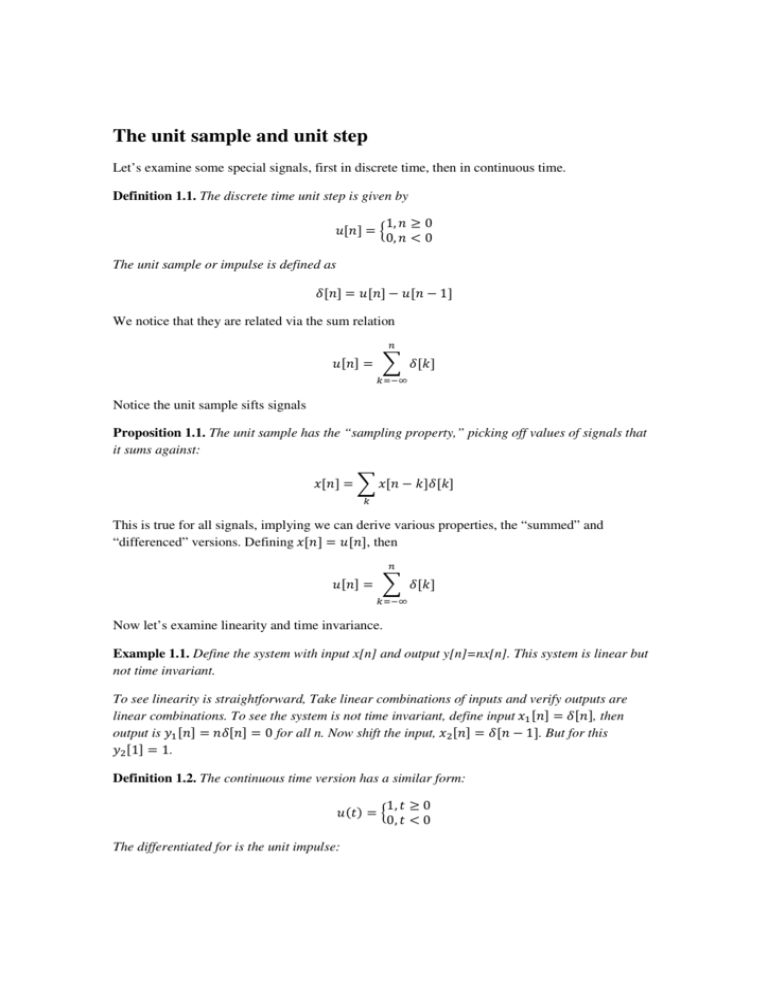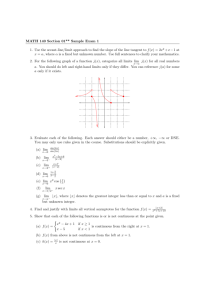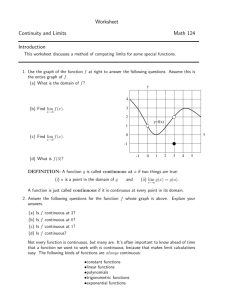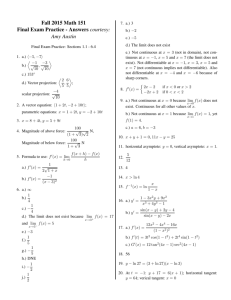The unit sample and unit step
advertisement

The unit sample and unit step
Let’s examine some special signals, first in discrete time, then in continuous time.
Definition 1.1. The discrete time unit step is given by
1, 0
0, 0
The unit sample or impulse is defined as
1
We notice that they are related via the sum relation
Notice the unit sample sifts signals
Proposition 1.1. The unit sample has the “sampling property,” picking off values of signals that
it sums against:
This is true for all signals, implying we can derive various properties, the “summed” and
“differenced” versions. Defining , then
Now let’s examine linearity and time invariance.
Example 1.1. Define the system with input x[n] and output y[n]=nx[n]. This system is linear but
not time invariant.
To see linearity is straightforward, Take linear combinations of inputs and verify outputs are
linear combinations. To see the system is not time invariant, define input , then
output is 0 for all n. Now shift the input, 1. But for this
1 1.
Definition 1.2. The continuous time version has a similar form:
The differentiated for is the unit impulse:
1, 0
0, 0
1
lim % $ $
!"# $
Proposition 1.2. The sifting property follows for smooth functions:
& ''('
To see this, we can argue loosely swapping the order of the limit according to
1
lim & ')' % $ ' $*('
"# $
1
lim '(' "# $
In particular, defining x(t)=u(t), then we see the integrated property follows
&
,
-
+(+











